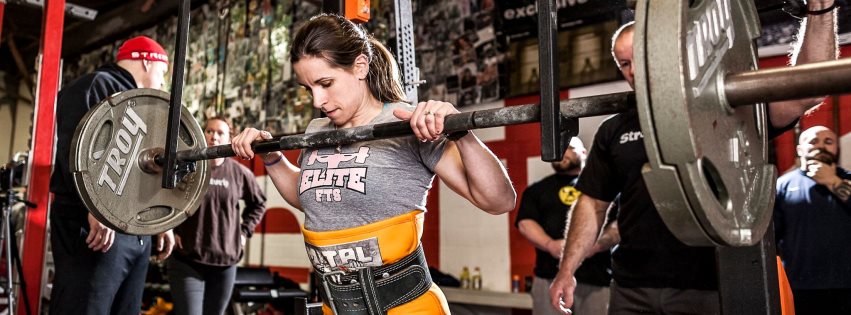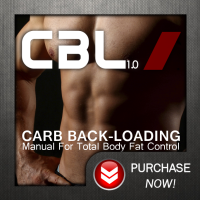“I eat oatmeal for breakfast every morning,” said Gym Lady. “It’s very healthy.” I knew this was coming. People always say the same things about breakfast. I have this same conversation almost every day. “Don’t,” I said.
“Why not?”
“I’ll keep this simple,” I replied. “While you sleep, all these really awesome things take place to get your body to burn fat. When you wake up, some more really awesome things happen that allow you to continue to burn fat. Oats are a starchy carbohydrate. When you eat them, you’re jacking your insulin through the roof, and all those awesome things that are supposed to happen when you wake up are destroyed.”
“Really?”
“Then, two hours later when your blood sugar finally crashes, you get tired, right?” She nodded her head. Things were starting to make sense. This is how it works with most people when you explain to them how Carb Back-Loading works over the long haul. You first have to tell them how conventional wisdom’s been killing their progress for all these years.
“So what do you have for breakfast?”
“Just coffee with heavy cream,” I said. “I’ve been skipping breakfast for a year and a half.”
Staying the Course
After eating this way for eighteen months, I’ve come to the conclusion that Carb Back-Loading isn’t a “diet.” It’s not something I’m trying once, then abandoning for the next big nutritional program that comes along. Carb Back-Loading works for me with regard to my job, my family, and my social life. It’s easy to both maintain and make necessary adjustments depending on my goals, and I’m going to continue doing it this way indefinitely. Here’s why:
1. Skipping Breakfast Is Easy.
Most days, I train in the morning, which entails having a cup or two of coffee and heading to the gym. During this time, I have to pack my lunch and snacks for work, and get my kids fed, brushed, dressed and off to school—all while avoiding stepping on Matchbox cars and Barbie shoes. My mornings are busy, so when you combine the optimal AM fat-burning of Carb Back-Loading with one less thing to worry about, I’m sold.
2. I Have More Energy Than I Did Before.
Before I began this style of eating, I’d never associated that 2 PM need-a-nap feeling with the fact that I’d been stuffing my face with carbs for the past six hours. I just assumed this was par for the course, the way it is with everyone else. Removing carbs from breakfast and lunch has made me feel much better in this regard. I have no more afternoon crash, no fatigue, and no bloating. My energy levels are consistent. This factor alone makes me want to diet this way indefinitely. I don’t ever want to go back to feeling sluggish for large portions of my day.
3. I’M Eating Better Food.
Carb Back-Loading is known as “the diet that lets you eat junk food at night,” but I’ll tell you this: I’m eating much better now than I was before I started doing this. Before moving (twice) and changing jobs, I had fallen into a trap that ensnares many parents—eating what the kids eat. Lunch, for me, typically consisted of leftover peanut butter and jelly sandwiches, an apple, and some chips. Although things could have been far worse, this certainly wasn’t doing me any good.
When I started eating proteins, fats, and vegetables for lunch, I found that I was making far better food choices both for myself and the kids. We bought more grass-fed meats, real butter, and greens—and we moved away from chemically processed foods containing partially hydrogenated oils, sugar alcohols, fake fats, and gluten. All of these things are important for overall health—and not just body composition goals.
4. My Strength and Body Composition Have Improved Noticeably.
Having fallen for all the popular myths out there, I’ve never been able to get super lean. With Carb Back-Loading, however, I’ve been able both to achieve new body composition goals and get stronger. Over the past year, I’ve gained significant amounts of strength both in the gym and on the competition platform. I’ve also been able to do all of this—hitting some major training PRs along the way—at a lighter body weight. My husband has experienced similar results in a very short period of time.
5. CBL Is Effortless To Maintain.
When people try to stick to extreme diets, two things happen: They’ll either miss out on social functions because they can’t eat certain foods, or they’ll totally blow it and never recover. Most popular diets will tell you to stop eating after 7 PM—and that you can’t have carbs at this point under any circumstances. With Carb Back-Loading, I can attend any social event, eat what I want, and not do any damage to my “diet.”
 I don’t have to skip the birthday cake or the hors d’oeuvres because I’m not allowed to go near them. Although I do have to stick to low-carb foods for lunch (burger patties and bacon-wrapped asparagus are two staples), family dinners are easy, and I don’t need to prepare anything special. We especially love taking the kids for a walk to the bakery down the block after dinner for a little evening snack.
I don’t have to skip the birthday cake or the hors d’oeuvres because I’m not allowed to go near them. Although I do have to stick to low-carb foods for lunch (burger patties and bacon-wrapped asparagus are two staples), family dinners are easy, and I don’t need to prepare anything special. We especially love taking the kids for a walk to the bakery down the block after dinner for a little evening snack.
I know exactly what you’re thinking. You don’t want to give up your bagels and your low-fat cream cheese for breakfast. You love your oatmeal, your English muffins, and your honey and jam. You’re convinced that Carb Back-Loading is something reserved for bodybuilders or powerlifters, or guys looking get jacked and ripped. You’re thinking this isn’t something for “regular” people, because the only people you’ve heard talking about it are athletic and huge.
I’m here to tell you this is far from the case. I’m a working mom with a family and a job, and this diet is perfect for me. It’s for people like me, busy dads, college athletes, pediatric nurses, serious strength athletes, and weekend warriors alike. It’s easy, it’s maintainable, it’s delicious—and it gets far better results than any nutritional program I’ve ever tried.
Get on it. You’ll be happy you did. You can learn more about it here: Carb Back-Loading.









Recent Comments